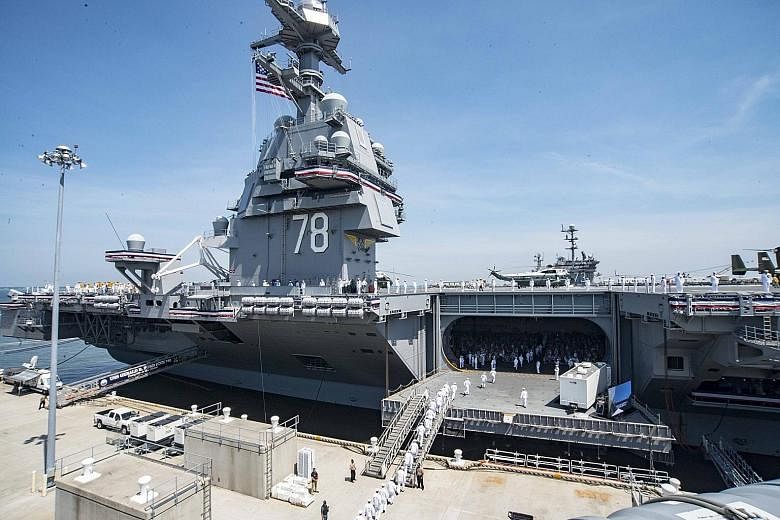NORFOLK (Virginia) • With flag- hoisting, gun-firing and horn-blowing fanfare, the US Navy opened a new era as it commissioned the first of a generation of more powerful, technologically advanced aircraft carriers that will transform the fleet in decades to come.
United States President Donald Trump presided over the commissioning ceremony for the US$12.9 billion (S$17.6 billion) nuclear-powered Gerald R. Ford, capping off the White House's "Made in America" week, a series of events designed to highlight the administration's push to increase domestic manufacturing.
The commissioning last Saturday came as China sent some of its most advanced warships to the Baltic Sea to join Russian vessels for exercises late this month. It was the first joint operation by the two regional giants in European waters.
Speaking to a crowd on a sweltering below-deck hangar that will transport warplanes to the world's danger zones, Mr Trump promised to try to restore higher levels of military funding, but also urged the crowd to help him push this year's Budget, in which he said he will seek an additional US$54 billion in defence spending, through Congress.
"I don't mind getting a little hand, so call that congressman and call that senator and make sure you get it," he said to applause. "And by the way, you can also call those senators to make sure you get healthcare."
Named for the 38th president, the Ford is roughly the same size as the Nimitz-class carriers welcomed into the fleet in 1975 by then President Ford, but it packs more punch.
The superstructure is smaller and farther back on the ship, which will allow it to launch 33 per cent more flight missions a day using a new catapult and landing system.
With nearly three times as much electricity, digital navigation and touch-screen technology, the ship will have a smaller crew and should save US$4 billion over 50 years, according to the Navy.
But its path to this day was not always smooth. The ship cost US$2 billion more than the initial US$11 billion estimate and took two years longer than expected to finish because of problems with the new catapults. Even now, it will require an additional four years of trials before deployment, costing US$780 million more, according to a Government Accountability Office report.
NYTIMES, XINHUA

